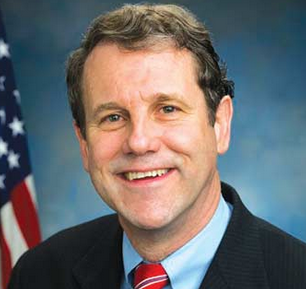
In the wake of last month’s toxic algal blooms that threatened Toledo’s drinking water supply, U.S. Senator Sherrod Brown has announced new legislation that could help improve water quality throughout Ohio.
“Climate change has led to more frequent violent storms,” Brown said during a teleconference earlier this week. “They flush more fertilizer, more runoff, from fields and parking lots and golf courses and concentrated animal feeding operations into the Maumee and into creeks and streams that all land in the Maumee River and then into Lake Erie.”
Brown acknowledged the severity of the bloom that disrupted Toledo’s drinking water supply for two days, but pointed to two other waterways severely impacted by this blight: Buckeye Lake and Grand Lake St. Marys. He then discussed incentives in the current farm bill that help with the agricultural end of the problem. These incentives include CRP programs for filter strips and riparian corridors, programs that help to reduce runoff issues.
“We knew that algae blooms were a continuing and increasing problem,” Brown said. “We’re helping farmers get incentives on not planting right out to the banks of the little stream or creek, to have filter strips that pull out a lot of these nutrients that would run off into a waterway.”
While recognizing that runoff is a significant contributor of the nutrients necessary for algal blooms to erupt, Brown also pointed to community wastewater treatment plants as a part of the problem, particularly those that have outdated combined sewer overflow systems (CSO).
Citing Environmental Protection Agency statistics, Brown stated that over 800 billion gallons of untreated wastewater and storm water are released into Ohio’s rivers, lakes and streams annually. The vast majority of this discharge is a consequence of failed CSOs. While the Ohio EPA is working with communities to resolve this issue, the cost of improvements is not simply daunting, but back-breaking. According to Brown, there are 73 communities in Ohio that have outdated systems. The estimated cost for addressing and improving these systems tops $7.3 billion. That, he said, is untenable.
“Communities simply can’t take care of this. It’s too big an investment for local communities. It would cause water and sewer rates to go so high that lots of businesses couldn’t afford it and most home owners couldn’t afford it.”
To help offset these costs, the Clean Water Affordability act authorizes a CSO specific grant program providing $1.8 billion over the next five years. Brown opined that these monies would not simply help communities update their systems, but improve their overall appeal to investors.
“Twenty-first century sewer systems attract twenty-first century jobs while preserving America’s promise of clean water,” he said.
